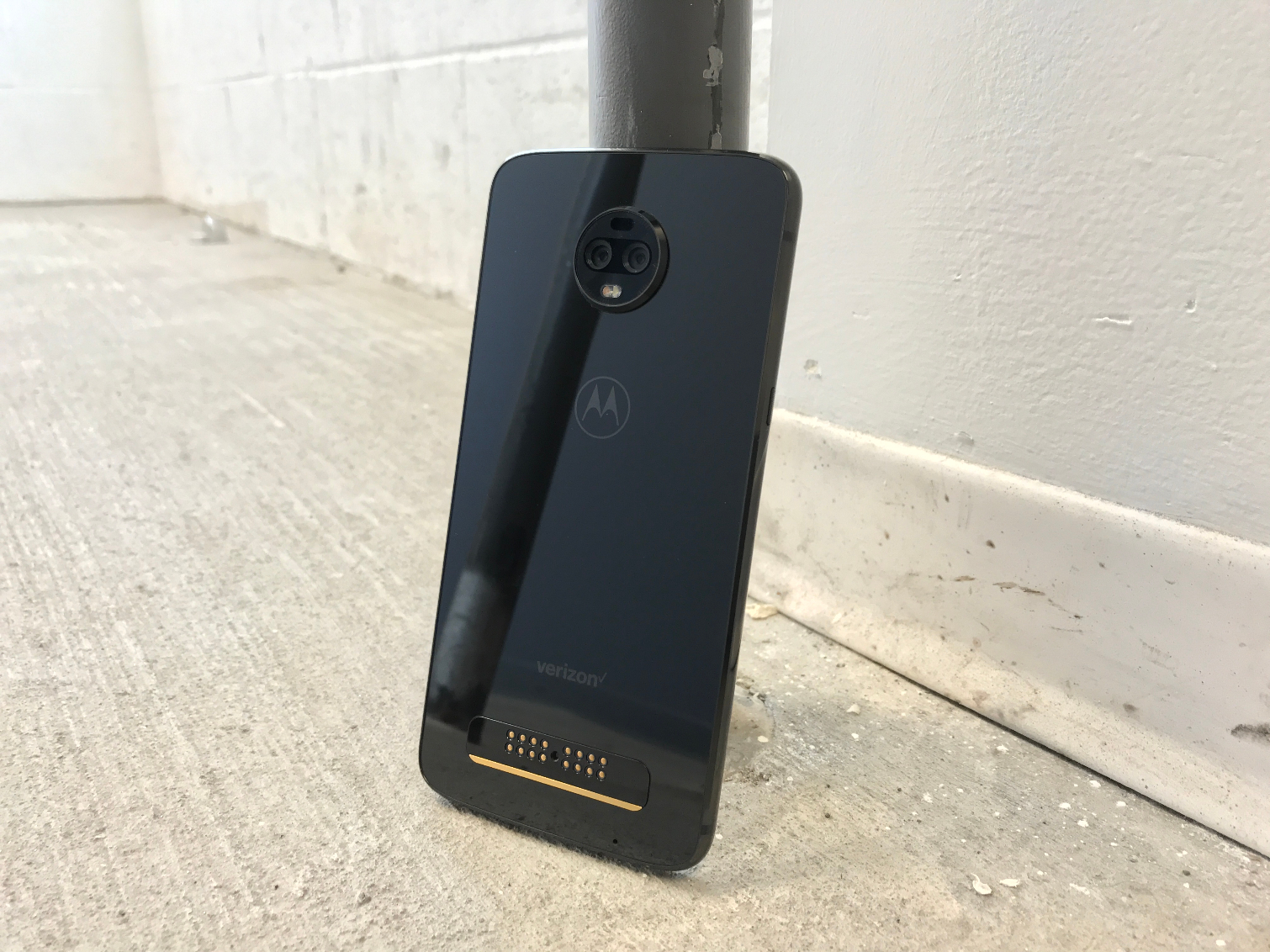Moto Z3 Unveiled with Breakthrough 5G Mod
Motorola unveiled a new flagship phone, the Moto Z3, that will be capable of taking advantage of 5G networks next year. But you'll need a 5G Mod to enjoy the faster speeds.
CHICAGO — Motorola's best known for its solid low and midrange phones, but the company has more ambitious plans on the horizon. At Motorola's headquarters today (Aug. 2), the phone maker unveiled new flagship hardware due out this month, along with an exciting accessory coming early next year that will allow Moto's latest phone to take advantage of higher-speed 5G networking.

Moto Z3
As expected, Motorola unveiled a more premium version of its Moto Z3 Play device. While previous high-end Moto Z handsets were distinguished by their "Force" subtitle, this time around, Motorola's range-topping modular phone is simply called the Moto Z3.

Details are still developing on the Moto Z3, but from very brief hands-on time with the phone we've already had, it's easy to see that it is extremely similar to the Z3 Play from a design standpoint. In fact, it's safe to say that just about everything that makes the new Moto Z3 different from the less-expensive variant is shrouded by the phone's glass-and-metal enclosure.

Verizon says it will offer the Z3 as an exclusive starting August 16. The phone will cost $480 or $20 per month if you opt for 24 monthly payments. Verizon says it will also offer rebates for the Z3 via trade-in, though details were sparse as this story was published.
Many of the Z3 Play's hallmark features, like its dual-lens cameras capable of shooting in true black-and-white, as well as its 6-inch full HD+ Super AMOLED display, return in the Moto Z3. However, in a surprising decision, Motorola has opted to equip the Moto Z3 with last year's Snapdragon 835 processor, rather than the Snapdragon 845 chipset found in the latest flagships. It's certainly an improvement over the Snapdragon 600-series CPU inside the Z3 Play, though won't be quite as fast as the Galaxy S9, OnePlus 6, or other leading Android devices.
The Moto Z3 combines that processor with 4GB of RAM and 64GB of internal storage, though that can be improved by up to another 2TB through the use of a microSD card.
Sign up to get the BEST of Tom's Guide direct to your inbox.
Get instant access to breaking news, the hottest reviews, great deals and helpful tips.
5G Moto Mod
Motorola revealed its long-rumored 5G Moto Mod in tandem with the Moto Z3. Like other Moto Mods, this one connects to the back of Moto Z-series devices. The difference, of course, is that this accessory enables 5G connectivity — a bold step toward the realization of 5G as a standard that will eventually be supported by mobile devices in the future.
MORE: 5G Networking: The Definitive Guide - Tom's Guide
The challenge, of course, is that carriers are still building out their 5G networks. Verizon, Motorola's partner with the Moto Z3 and this Mod, is launching 5G service in four markets later this year, but that's residential broadband and not mobile. The carrier isn't rolling out a 5G mobile solution until 2019. It's not coincidental that the 5G Moto Mod won't be available until then at an undisclosed price.

In addition to those next-generation radios, the new accessory carries a 2,000-mAh battery to offset potential increases in battery drain. This battery won't be used to increase the longevity of the phone beyond normal 4G usage, but merely keep the 5G radios humming along, as they consume a lot of power.
The 5G Moto Mod carries an array of four antennas as well as one of Qualcomm's latest X24 LTE modems, to deliver the fastest-possible LTE speeds even when 5G is unavailable. After the announcement, Motorola demoed a prototype version of the Mod inside its headquarters, in a specialized room where engineers could control the strength of the signal. In the trial, the pre-production 5G Mod achieved download speeds over 3Gbps, though it was very prone to slowdown when the signal blaster was blocked by objects.
Motorola cited real world examples of how 5G could improve the mobile experience, from downloading hundreds of songs from Spotify in mere seconds to downloading four 4K-quality episodes of Game of Thrones in just one minute. However, the company said it's still working with Verizon to determine whether users will still face the same data caps they're already limited to on current 4G networks.
Adam Ismail is a staff writer at Jalopnik and previously worked on Tom's Guide covering smartphones, car tech and gaming. His love for all things mobile began with the original Motorola Droid; since then he’s owned a variety of Android and iOS-powered handsets, refusing to stay loyal to one platform. His work has also appeared on Digital Trends and GTPlanet. When he’s not fiddling with the latest devices, he’s at an indie pop show, recording a podcast or playing Sega Dreamcast.
